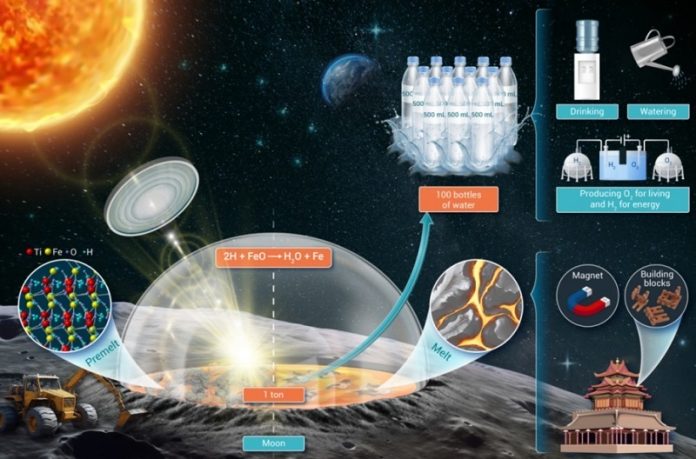
Water is crucial for human survival, especially for future missions to the Moon. Scientists have been working hard to find ways to produce water on the lunar surface.
A team led by Professor Wang Junqiang at the Ningbo Institute of Materials Technology and Engineering (NIMTE) in China has recently made an exciting breakthrough.
They developed a new method to produce large amounts of water by reacting lunar soil, known as regolith, with hydrogen already present on the Moon.
Earlier lunar missions, such as NASA’s Apollo and China’s Chang’E-5, found evidence of water on the Moon.
However, the amount of water in the lunar minerals is incredibly low—between just 0.0001% and 0.02%. This makes it difficult to extract enough water for use on the Moon.
In their study, Professor Wang’s team used samples of lunar soil brought back by the Chang’E-5 mission.
They discovered that heating lunar regolith to very high temperatures (over 1,200 K) with special mirrors could release water.
Their experiments showed that one gram of this heated lunar soil could produce between 51 and 76 milligrams of water.
This means that one ton of lunar regolith could generate more than 50 kilograms of water, or about 100 bottles of drinking water.
This would be enough to provide drinking water for 50 people for a day.
The researchers also found that a mineral called ilmenite (FeTiO3) in the lunar soil is especially rich in hydrogen, which comes from the solar wind.
This hydrogen can be used to create water when the soil is heated.
The water produced using this method could be used not only for drinking but also for growing plants on the Moon. Additionally, it could be broken down into hydrogen and oxygen. The hydrogen could serve as a source of energy, and the oxygen would be essential for breathing.
These findings offer a promising new approach to finding and using water on the Moon. They could play a key role in building future lunar research stations, making long-term human presence on the Moon more feasible.
The research was published in the scientific journal The Innovation.



